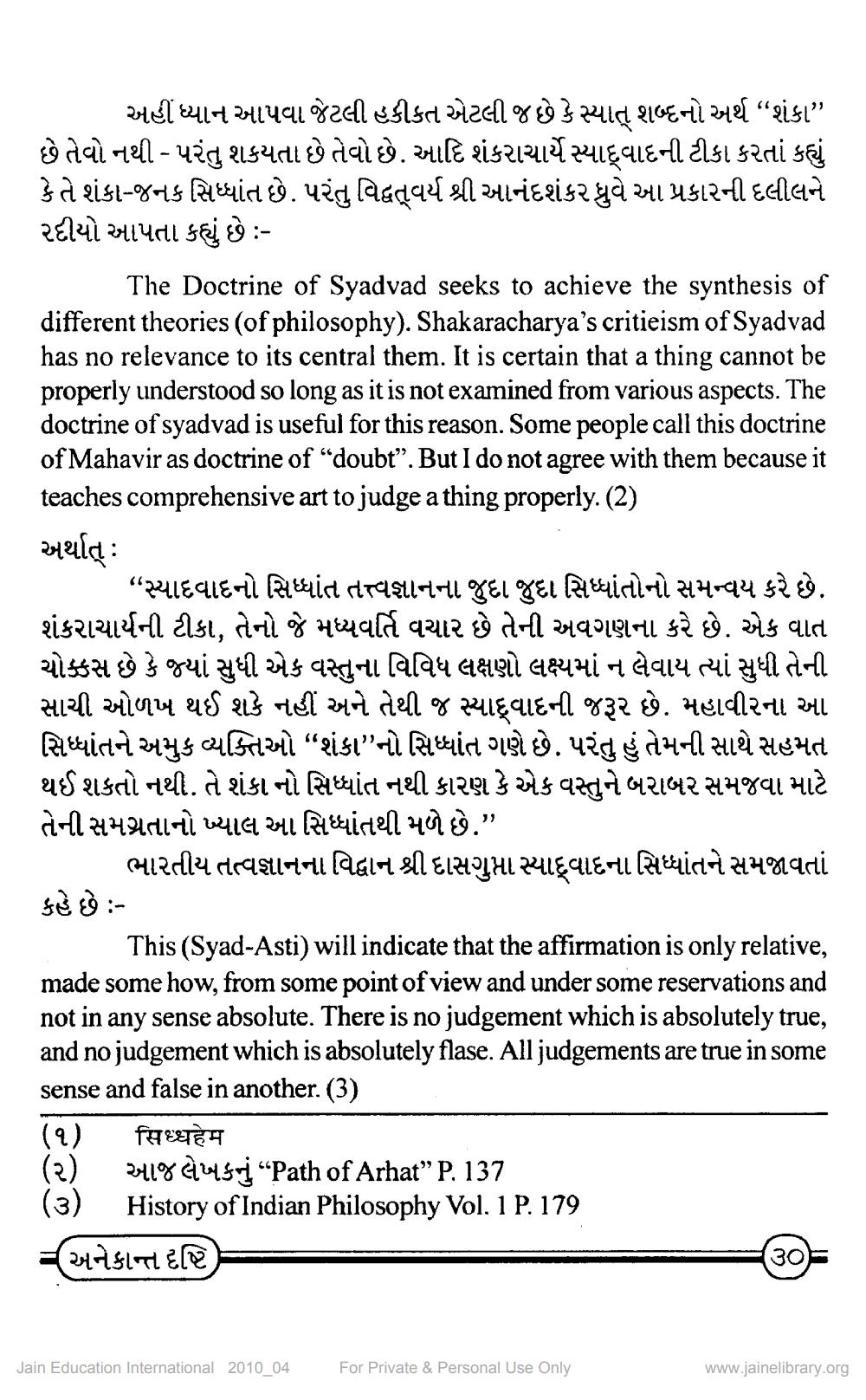________________
અહીં ધ્યાન આપવા જેટલી હકીકત એટલી જ છે કે સાત્ શબ્દનો અર્થ “શંકા” છે તેવો નથી - પરંતુ શકયતા છે તેવો છે. આદિ શંકરાચાર્યેસ્યાદ્વાદની ટીકા કરતાં કહ્યું કે તે શંકા-જનક સિધ્ધાંત છે. પરંતુ વિદ્વવર્ય શ્રી આનંદશંકર ધ્રુવે આ પ્રકારની દલીલને રદીયો આપતા કહ્યું છે :
The Doctrine of Syadvad seeks to achieve the synthesis of different theories (of philosophy). Shakaracharya's critieism of Syadvad has no relevance to its central them. It is certain that a thing cannot be properly understood so long as it is not examined from various aspects. The doctrine of syadvad is useful for this reason. Some people call this doctrine of Mahavir as doctrine of "doubt”. But I do not agree with them because it teaches comprehensive art to judge a thing properly. (2) અર્થાત્ ઃ
- “સ્યાદવાદનો સિધ્ધાંત તત્ત્વજ્ઞાનના જુદા જુદા સિધ્ધાંતોનો સમન્વય કરે છે. શંકરાચાર્યની ટીકા, તેનો જે મધ્યવર્તિ વચાર છે તેની અવગણના કરે છે. એક વાત ચોક્કસ છે કે જયાં સુધી એક વસ્તુના વિવિધ લક્ષણો લક્ષ્યમાં ન લેવાય ત્યાં સુધી તેની સાચી ઓળખ થઈ શકે નહીં અને તેથી જ સ્યાદ્વાદની જરૂર છે. મહાવીરના આ સિધ્ધાંતને અમુક વ્યક્તિઓ “શંકાનો સિધ્ધાંત ગણે છે. પરંતુ હું તેમની સાથે સહમત થઈ શકતો નથી. તે શંકા નો સિધ્ધાંત નથી કારણ કે એક વસ્તુને બરાબર સમજવા માટે તેની સમગ્રતાનો ખ્યાલ આ સિધ્ધાંતથી મળે છે.”
ભારતીય તત્વજ્ઞાનના વિદ્વાન શ્રી દાસગુપ્તા સાદ્વાદના સિદ્ધાંતને સમજાવતાં કહે છે -
This (Syad-Asti) will indicate that the affirmation is only relative, made some how, from some point of view and under some reservations and not in any sense absolute. There is no judgement which is absolutely true, and no judgement which is absolutely flase. All judgements are true in some sense and false in another. (3) (૧) सिध्धहेम (૨) આજ લેખકનું “Path of ArhatP. 137. (3) History of Indian Philosophy Vol. 1 P. 179
અનેકાન્તદષ્ટિ
-
- -
DGE
Jain Education International 2010_04
For Private & Personal Use Only
www.jainelibrary.org




